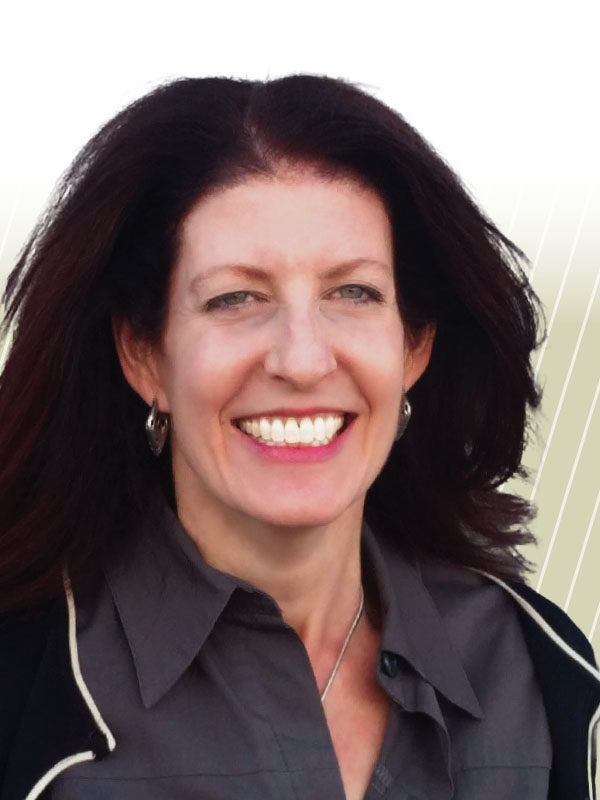When she accepted a new position in 2018 at the University of Nevada, Las Vegas (UNLV), Nicholle Zarkower was excited about the opportunity to apply research-driven communications principles to advance the institution, even though it meant maintaining two separate households.
“I came here alone,” explains Zarkower, executive director for strategy and communications, office of the senior vice president of business affairs, UNLV. “My husband, Mark, didn’t come with me. He’s still in Tucson.”
Why did you choose UNLV?
I wanted a new challenge. I had been at the University of Arizona, Tucson, for about 12 years and had recently finished my Ph.D. in communication when Jean Vock, who at the time was vice president, finance and business at UNLV, mentioned an upcoming opportunity.
How can institutions apply communications principles to advance organizational development?
When I lead strategic planning efforts, I use a modified version of the nominal group technique (NGT). Research has found that traditional brainstorming—where people start tossing around ideas—is not as effective as letting group members think by themselves before they start to share information.
The advantage of this method is that participants present even more ideas than in the typical brainstorming scenario, where a group tends to follow the strongest voice.
Using NGT, I give all members of the group anywhere from three to seven minutes to jot down answers to a question. Then I go around the room and allow each person to give his or her top idea. If somebody comes up with the same thought, he or she gives the next-best idea so there’s no repetition. After clarifying all of the ideas, each team member votes for the top five by assigning each idea one of five different point values from five to one. Then we prioritize the ideas by their scores.
I’ve used NGT with UNLV’s strategic planning team to help it think about top goals. Streamlining business processes was one of the top scores, so we have launched a process improvement initiative.
Why should a division or department develop its own strategic plan?
It’s a way to get people moving in the same direction. Large universities have such a diversity of functions and employees, everything from groundskeepers to faculty. A strategic plan allows you to set concrete goals that somehow touch everybody and help you decide how to use scarce resources.
How do you align people and activities with organizational goals?
I recommend a combination of transparency, communication, and ownership. When people are involved in the planning process, they understand it better, and it makes a world of difference. For example, when individuals on a team have the ability to articulate and prioritize goals, then participants become part of the solution and have an ownership stake in it.

What mistakes are institutions making with their strategic planning?
A big one is not following through. Often, employees roll their eyes when they hear the words “strategic plan” because so much time can be devoted to developing a mission statement and putting together goals, but then nothing happens. They think, “Here we go again.” The mistake institutions make is failing to ensure that strategic planning has an infrastructure to execute. How are you going to ensure that things will get done? Somebody needs to oversee the plan and be able to ask staff, “Hey, where are you on this?”
In your opinion, how can business officers help create an open and inclusive work environment?
I believe in sharing as much information as you legally can. My philosophy is to share a lot and share widely. It empowers people and lets them know that you trust them. Too often, people in leadership roles think important information has to be confidential.
What is the best business advice you have received?
It was to ensure that we spend time on activities related to organizational mission and goals. Because of the scarcity of resources, sometimes we get caught up in this craze to find new revenue lines—such as water delivery or fluff-and-fold laundry services for students living in campus housing—that ultimately cost more in staff time than could ever be generated in revenue. Organizations need to look closely at the extra activities they’re engaged in and evaluate whether these are strategic and mission-aligned.
What challenges have you overcome?
I have multiple sclerosis. I generally tell people I have “MS lite” because it is generally well-managed. My challenge is trying to maintain a good work-life balance.
How do you unwind from the pressures of the job?
I’m a big current events person with a high need for cognition. I invest myself in what’s going on in the world and this country.
Looking back over your career, what would you like to have done differently?
I wish I had found a way to balance my time more effectively when I was pursuing my Ph.D. and working full time. That was hard. I was enrolled in a traditional program, so I would have to leave work in the middle of the day to go to class.
Tell me something about yourself that your coworkers probably don’t know.
My first job out of college was as a community organizer. I knocked on doors during the dinner hour and asked for money for environmental causes.
Have you had an event in your life that changed your outlook or sense of purpose?
In the fall of 2008, I had just stepped into a new leadership role in the housing department at the University of Arizona and had started as a full-time student in my Ph.D. program. Also, Mark and I had just moved into a house we had been building for what seemed like forever. I was in my office ready to leave to take an exam for one of my classes when the phone rang. It was my husband. He said, “There’s been a fire. Our house almost burned down, but the cats are safe.”
That event made me stop and think. My life looked like this: I would get up at 5 a.m., go to work, come home, eat a 15-minute dinner, and sit in front of the computer until 1 a.m. doing “job” work and homework, and start all over again at 5 a.m. the next morning. I was consistently getting only four hours of sleep.
After the fire, I realized that I needed to change the pattern of my life. I talked to my adviser and my program director and said, “I know the first line of your handbook says there is no such thing as a part-time Ph.D. student, but unless I can be part time, I can’t do this. I have to work, and I can’t continue this way.” Thankfully, they made an exception for me.
MARGO VANOVER PORTER, Locust Grove, Va., covers higher education business issues for Business Officer.



